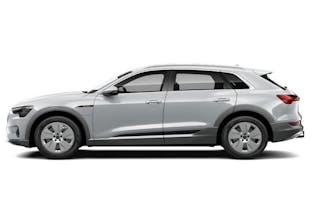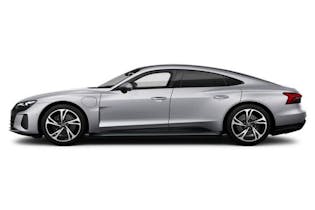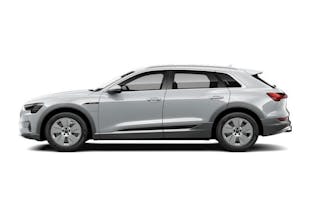Ford Escape ST-Line X PHEV car review
One week living with the Ford Escape PHEV.

The Ford Escape is a medium-sized SUV that comes in hybrid and plug-in hybrid powertrains. Ford let us take the highest-spec model, the ST-Line X, in PHEV form to use as a daily driver for the week to see how it fits into the Kiwi lifestyle.

First impressions
On the outside, it’s quite curvy and European looking rather than having the chunky, muscular lines made popular by American SUVs. It does look nice and appears quite compact.
While it doesn’t look big from the outside, there’s plenty of space for the driver and front passenger inside. The rear seats and boot work together nicely – you can slide the rear seats forward and back. That allows you to either eat into boot space to create room for passengers, or cut down rear legroom to accommodate bigger items in the boot. It’s a great feature.
However, my highlight was the little plastic door protectors that automatically pop out when you open the doors to protect the edges from dings and scrapes. I took great pride in showing them off to anyone who happened to be nearby, and spent way too long taking videos of the mechanism in action. I’m sad to admit that not everyone shared my enthusiasm.
The ST-Line X is the top model and costs $68,990, $6000 more than the base PHEV. Both models can qualify for a $5750 rebate under the Government’s Clean Car Discount. It seems like a good deal for the more expensive model as you appear to get quite a lot of bang for your buck.
On top of visual enhancements such as body kits and nicer wheels, you a better sound system, a panoramic sunroof (that makes it feel nice and airy), a heads-up display (HUD), heated seats and an automatic parking feature, among other things.
Despite the SUV exterior, the PHEVs only come in front-wheel drive whereas you can buy the other motor types in all-wheel drive.
How we test
Each vehicle we trial gets the same treatment: a week of commuting in rush hour from Lower Hutt to Consumer HQ (a round trip of 28km); a run to the supermarket; and a drive over the Remutaka Hill and back, to see how it goes on a longer weekend trip. In total this makes for about 270km of motoring.
We record fuel use (both actual and on the trip computer) and measure electricity usage where appropriate, with PHEVs and EVs. The actual fuel use is measured by filling the tank to the brim at the start of the trial and then again at the end, and comparing numbers. It’s an inexact science that we use as a check, but it’s also a real-world test.
Commuting
The 28km commute was completely covered by the battery range each day, though the claimed 59km of range would be hard to accomplish because I was getting home with less than 10km of range showing on the dashboard. At highway speeds and on hills, the battery drains quickly. Still, it was enough for my needs.

The salesman at Ford coached me to put the car into EV mode when commuting to make sure that the car ran as efficiently as possible. This vehicle has more than enough power in EV mode, and I never felt it was lacking at the roundabout that I need to accelerate into at the bottom of my hill. Also, I really tested the EV power by ramping up the air con, rear demister and seat warmers. The petrol motor never kicked in once.
As a commuter, it was great. The combo of a good, adaptive cruise control and excellent lane keeping meant it was basically driving itself each day. But here’s a tip for casual drivers: It gets angry and beeps if you don’t hold the steering wheel.
Supermarket trip
Front and rear views make it nice and easy to ease your way into tight parks. I gave the self-parking feature a go but found that I could do it myself much faster. Still, if you aren’t a confident parker, it’ll be a welcome and stress-reducing thing to have. The boot is plenty big enough to swallow all of our shopping and the electric boot can be opened by your foot when your hands are full. A solid pass mark from me.
Longer journey
The combined output of 167kW makes it a reasonably peppy vehicle when you’re driving on the highways. The car tries to spend most of its time initially in EV mode until it drains the battery. From there it works just like a regular hybrid. With the battery fully drained, the trip computer said it used petrol at a rate of 5.5L/100km. That’s still good going for a car this size.
In terms of a place to be, it was very nice to sit in the Escape for an extended trip. The seats are comfy, the sunroof makes it feel spacious and the stereo is good. I’d happily go on holiday in this thing.
I always nitpick though, and I did come up with a single gripe. My loaned car was in white, and with the pop-up screen that the HUD projects onto also displaying a white text, I found it hard to read the screen during the day. It’s more of a me problem as it as something to do with my height, meaning I was looking at a steeper angle than most so the bonnet was the backdrop to the HUD. However, a different car colour might have made a difference (or the option to change the font colour in the settings menu).
Final thoughts

I really liked my time in the Escape. The cabin was a very nice place to be and the combo of quiet yet just powerful enough driving in EV mode meant it was peaceful too. The light, airy interior felt modern and well put together. Out of all the PHEVs I’ve driven, this is the one I’d buy (because I don’t think I’d ever get my hands on the RAV4 PHEV). I couldn’t really fault anything from the experience.
Ford claims 1.6L/100km for the PHEV. We got very close to that – the trip computer said we got 1.8L and that matched our actual fuel usage too. Up until we went on the day trip, the readout was just 0.2L/100km as it spent most of its time in EV mode. That’s some cheap-as-chips driving. What blew out the numbers was our longer trip so if you do loads of long roadies, expect that figure to be higher.
The vehicle was kindly lent to us by Ford NZ.
We've tested 95 electric and hybrid cars.
Find the right one for you.
Audi

Audi

Audi

Member comments
Get access to comment